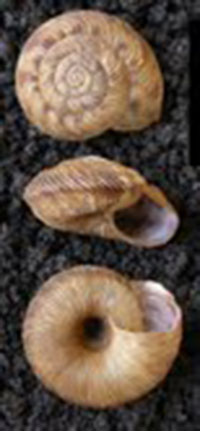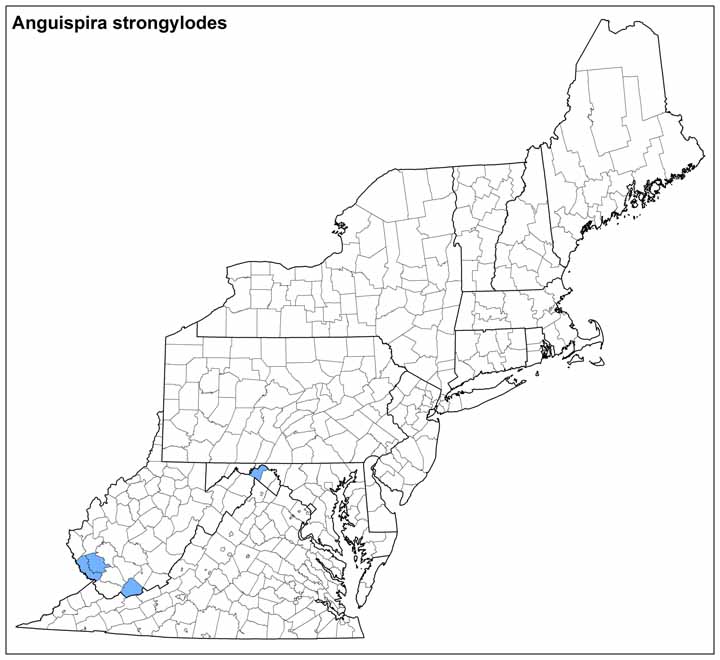Land Snails
.jpg)

Photo(s): Anguispira strongylodes © Bill Frank, shell © Jochen Gerber.
Click photo(s) to enlarge.
Anguispira strongylodes (Pfeiffer, 1854)
Family: Discidae
Common name: Southeastern Disk
Identification
Width: 18 mm
Height: 10 mm
Whorls: 5+
The shell of Anguispira strongylodes has a low heliciform shape with a deep open umbilicus, a thin lip, and strong radial ridges. It is distinguished from A. alternata only by its reduced color pattern. Its chestnut-colored spots are smaller, and there are no radiating streaks.
Ecology
In Tennessee, Anguispira strongylodes has been found in close association with limestone and neutral soils, very steep slopes and high elevations, and late-successional forests, particularly oak-cedar forests (Coney et al, 1982).
Taxonomy
Recent work on the shells and genetics of Anguispira species shows a great deal of variation within the widespread A. alternata, A. jessica, and A. stronylodes, and color patterns may not be helpful in distinguising these species. There are also some unique individuals within A. alternata that suggest the possibility of a "hidden" cryptic species.
Synonyms for A. strongylodes are Anguispira alternata strongylodes, A. a. crassa, A. a. macneilli, A. crassa, A. macneilli, Helix strongyloides, and Pyramidula alternata rarinotata.
Distribution
This animal has been reported in 15 southeastern states, from east Texas to northern Florida, north to Illinois and Virginia. The easternmost occurrence of this species in Virginia is a sub-fossil shell reported by Hubricht (1985) in Halifax County (not shown on range map).
Conservation
NatureServe Global Rank: G5
Greg Kimber, Ken Hotopp, Meegan Winslow 8/2012
Update Ken Hotopp 2/2018



